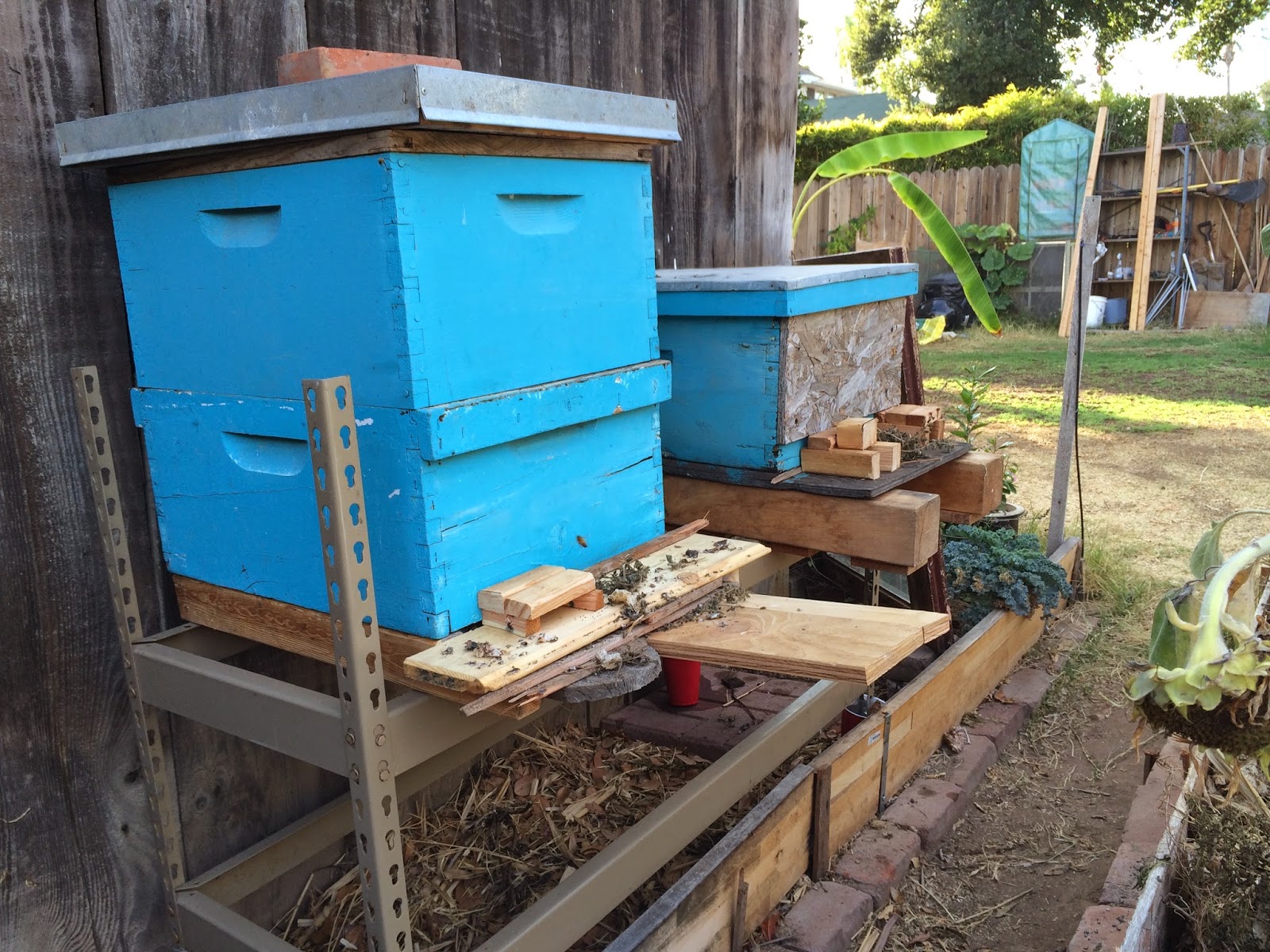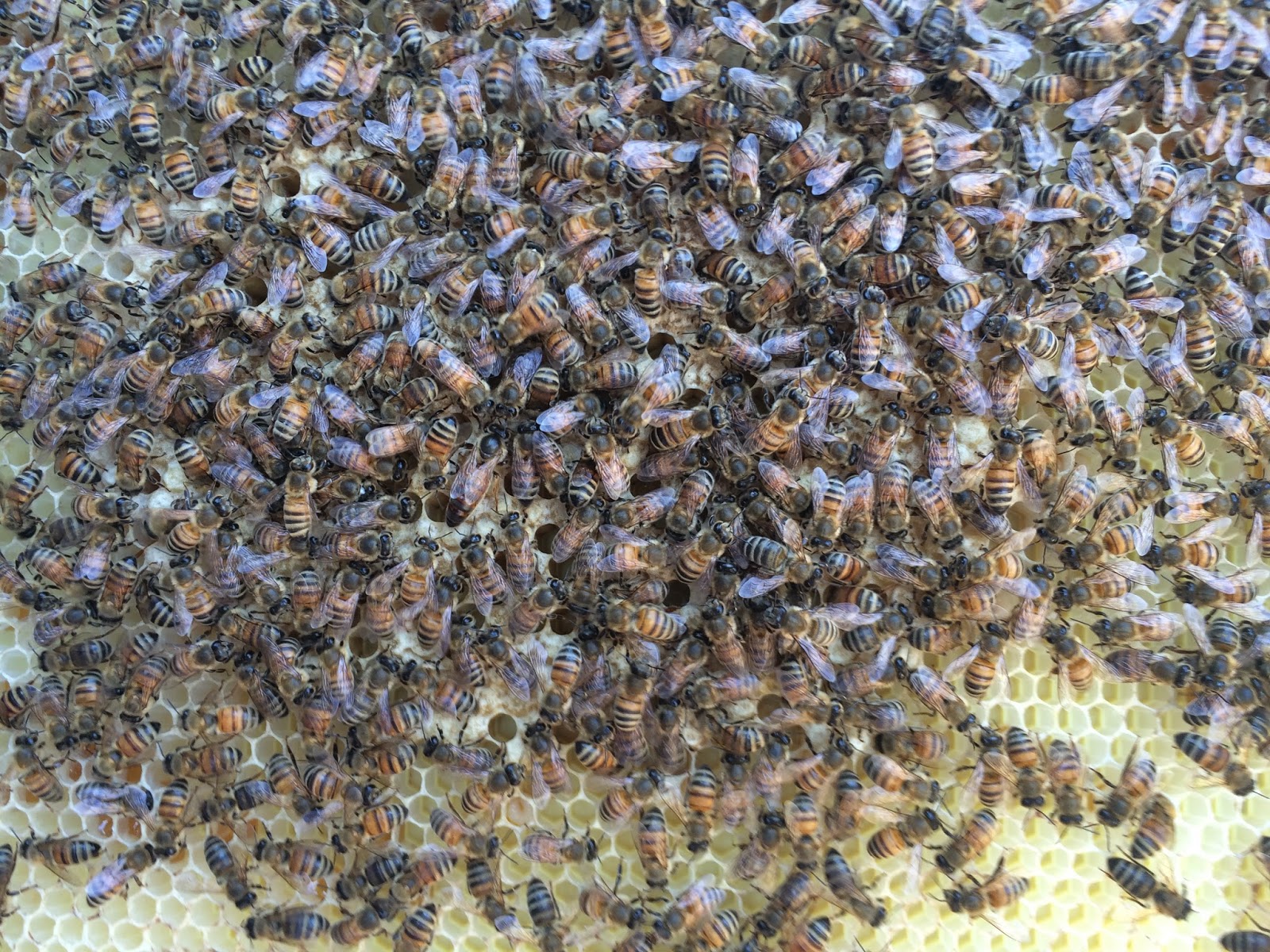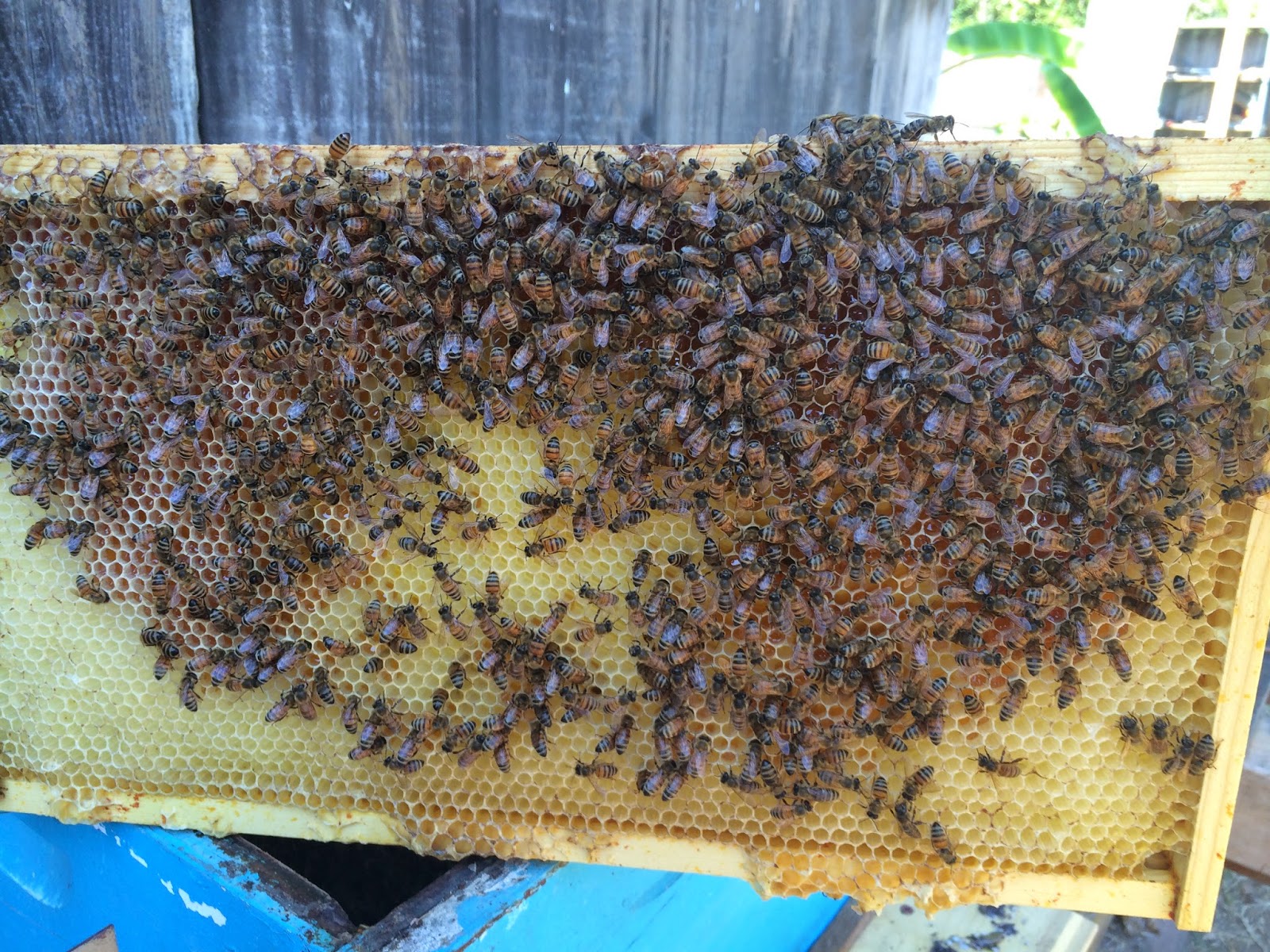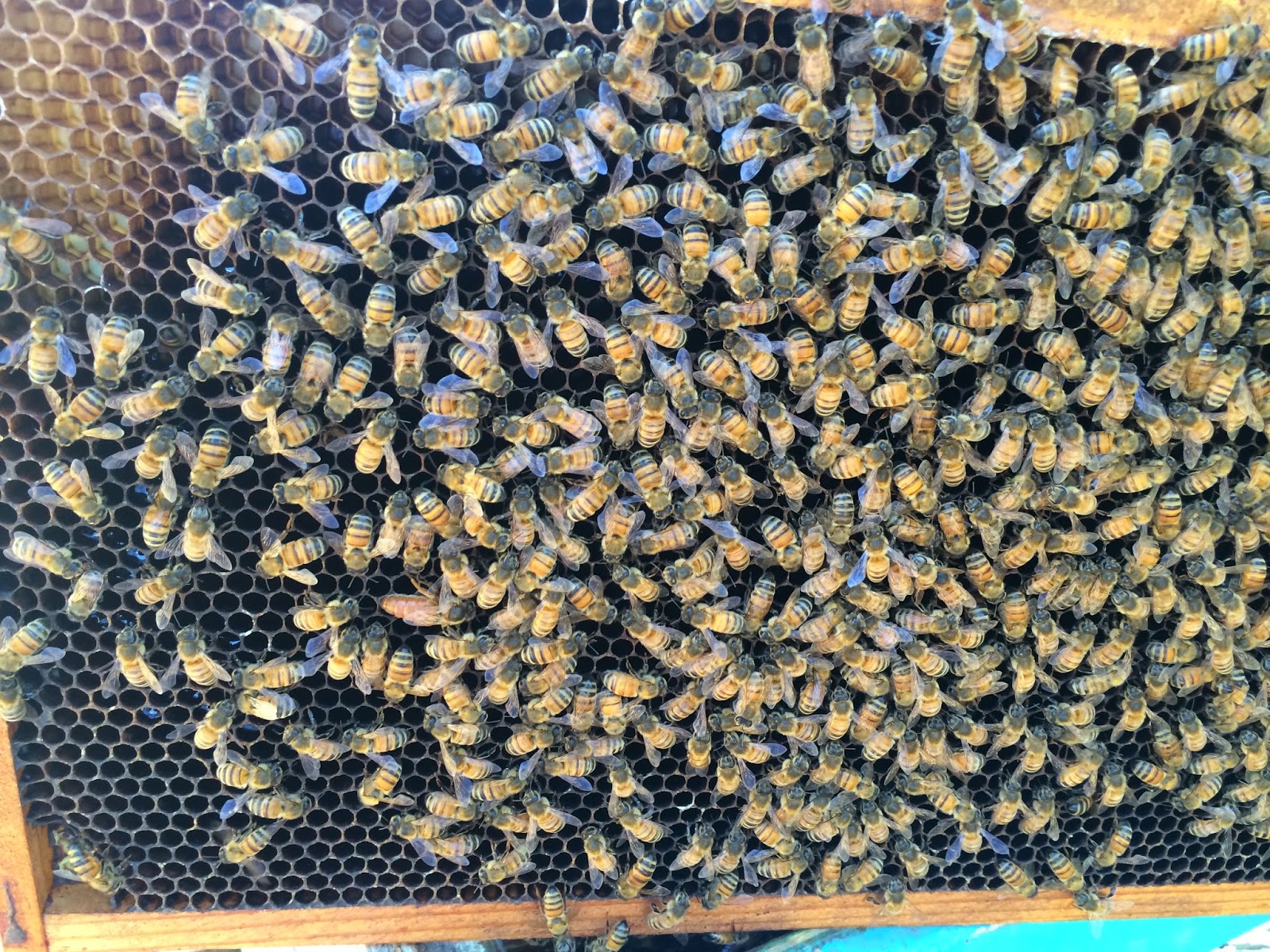The final excitement I have to report was my first attempts at building a ventilated bottom for one of my hives, some novelty ‘runway entrances’, and this morning’s inspection which revealed 2 very healthy looking Queens.
Here are the two colonies, the Dark Queen is on the left, the Golden Queen on the right.
Here’s a note added a couple of years after this original post:
What am I doing during a bee hive inspection?
I certainly believe in learning through actual experience, in addition to supplemental reading. During an inspection i’m typically doing at least these basic things:
- Looking at the hive entrance – are there any bees fighting at the entrance? This can be a sign of robbing.
- Looking at the flight activity – are the bees bringing in pollen, does it look like the hive is active, given the weather?
- Looking on the ground in front of the hive – are there any bees crawling around? Do they have deformed wings? This can be a sign of varroa issues.
- After puffing a little bit of smoke and waiting a minute, I’ll count how many frames of bees there are – has the hive grown or declined since last time?
- Checking – do the bees have stored honey? If not, they may be starving. I’ll consider moving a frame of honey from another hive to feed them.
- Checking – do the bees have all stages of brood? Eggs, larvae, capped brood to emerging bees. If the hive has all of these, then even without seeing the queen, I know she’s there.
- Asking – is there anything out of the ordinary? Is there mold on the beeswax? Are there critters in the hive like ants, wax moths or small hive beetles? If there are, more advanced steps need to be taken.
The Inspection
The Compost Bees (Dark Queen) had capped brood and capped honey, as well as lots of stores. Can you see her? She’s there in the middle just to the left. There is capped brood on very fresh comb.
On other frames there was good evidence the bees are finding local food sources – check out the nectar that is being turned into honey on this frame.
The Beach Bees (Gold Queen) definitely had a fair bit of nectar on the way to honey. No capped brood yet, but eggs were visible. Can you see the queen?
The Garage Bees (no Queen) had some capped drone brood! Hopefully there won’t be any more worker egg laying now there’s a Queen a few frames and a newspaper away.
I found just one small white beetle.
So far no signs (that I could see with my newbie vision) of any problems or diseases in the hives.
No spiciness, and bees were again happy to have me sit a few feet away for an afternoon observation!
Still haven’t been stung… not sure if I’ll regret writing that!



